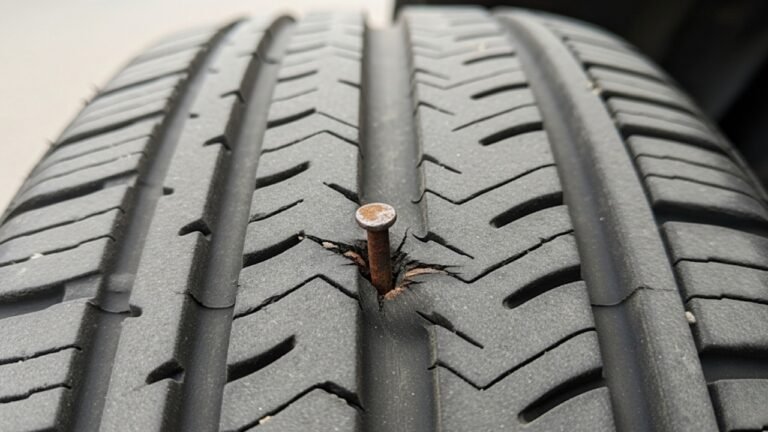Fuel Line Disconnect Tool Harbour Freight

Working on a vehicle’s fuel system can be tricky, especially when dealing with quick-connect fuel lines. Without the right tool, you risk damaging delicate connectors or making the job far more complicated than it needs to be.
What is a fuel line disconnect tool harbor freight, and why do you need one? A fuel line disconnect tool is specially designed to separate fuel lines from their fittings without breaking clips or damaging the fuel system. Many vehicles use quick-connect fittings that require a precise tool for disconnection.
This article will guide you through everything you need to know about Harbor Freight fuel line disconnect tools. We’ll compare the best models, discuss key features, and provide essential safety tips.
What Is a Fuel Line Disconnect Tool Harbor Freight?
A fuel line disconnect tool is a specialized device designed to separate fuel lines from fuel system components like fuel filters, fuel rails, and fuel pumps. Many modern vehicles use quick-connect fittings that require this tool to disengage properly without damaging the line or connector. Without it, removing fuel lines can be difficult and may lead to breakage or leaks.
disconnect fuel line tools are essential for working on fuel systems in vehicles from manufacturers like Ford fuel line disconnect tool, GM fuel line disconnect tool, and Chrysler, which commonly use quick-connect fittings. They are particularly useful for vehicles with returnless fuel injection systems and diesel engines, making them a must-have for DIY mechanics and professionals alike.
Why Choose a Fuel Line Disconnect Tool from Harbor Freight?
Harbor Freight offers fuel line disconnect tools that are significantly more affordable than many name-brand alternatives, making them an excellent choice for budget-conscious mechanics. Despite their lower price point, these tools maintain solid build quality, often matching or exceeding competitors in durability and functionality.
Customer reviews highlight the reliability and ease of use of these tools. Many users praise them for their effectiveness in removing stubborn fuel line connections without breaking clips or damaging fuel lines. Real-world performance tests show that Harbor Freight’s tools are just as capable as more expensive options, making them a smart investment for both professionals and DIYers.
Step-by-Step Guide: How to Use a Fuel Line Disconnect Tool
Step 1: Ensure Safety First
Before working on the fuel system, relieve fuel pressure by disconnecting the fuel pump fuse and running the engine until it stalls. Wear safety goggles and gloves to protect yourself from fuel exposure.
Step 2: Locate the Connection
Identify the fuel line fitting that needs to be disconnected. These are usually found near the fuel filter, fuel rail, or fuel pump.
Step 3: Choose the Right Tool
Select the appropriately sized fuel line disconnect tool that fits your vehicle’s fuel line.
Step 4: Insert the Tool
Slide the tool into the fitting, pushing it in until it disengages the internal locking mechanism. Some tools may require squeezing or twisting for proper engagement.
Step 5: Pull Apart the Connection
While keeping the tool in place, gently pull the fuel line away from the connector. The line should slide off smoothly.
Step 6: Check for Damage
Inspect the fittings and clips to ensure nothing is broken or stuck before reassembling.
Step 7: Reconnect and Test
When reconnecting, push the line back onto the fitting until it clicks into place. Start the engine and check for leaks before completing the job.
Tips for a Smooth and Safe Fuel Line Disconnection
Always depressurize the fuel system by removing the fuel pump fuse and running the engine until it stalls. Use a rag under the connection to catch residual fuel.
Prevent damage by using the correct-sized tool and avoiding excessive force. Insert the tool properly and rotate it to release clips smoothly.
Work in a well-ventilated area to avoid inhaling harmful vapors. Keep a fire extinguisher nearby for safety.
Common Mistakes to Avoid
Working with fuel lines? Avoid these common mistakes to keep the job safe and hassle-free:
-
Skipping fuel system depressurization: This can lead to dangerous fuel sprays. Always release the pressure before disconnecting any fuel lines.
-
Using the wrong-sized tool: A poor fit can cause frustration and even damage the fuel line. Double-check that you have the correct tool for a smooth disconnection.
-
Forcing the fuel line: Yanking or pulling too hard can break connectors. Instead, use the right tool and apply steady, even pressure to disengage the clip properly.
By avoiding these mistakes, you’ll make fuel line disconnections safer, quicker, and frustration-free. A little patience and the right tools go a long way!
Frequently Asked Questions (FAQs)
Q: Can I use a Harbor Freight fuel line disconnect tool on all vehicles?
Harbor Freight’s tools are compatible with most domestic and some foreign vehicles, but not all. Different manufacturers use various connector types, so it’s crucial to check tool compatibility with your vehicle’s fuel system before purchasing.
Q: How do I clean and maintain my fuel line disconnect tool?
Regular cleaning extends the tool’s lifespan. Wipe off fuel residue with a clean rag and use a degreaser if needed. Store in a dry place to prevent rust and check for wear before each use to ensure it remains effective.
Q: Are there any alternatives to using a fuel line disconnect tool?
While specialized tools are the safest option, some mechanics use picks or screwdrivers to release clips. However, these methods risk damaging connectors and fuel lines, making a proper disconnect tool the best investment.
Conclusion:
Choosing the right fuel line disconnect tool is a small but important step in ensuring your vehicle’s fuel system stays in top condition. Harbor Freight offers reliable, affordable options that can make the job easier and safer.
With the right tool in hand, you can confidently tackle fuel line disconnections, preventing damage and minimizing the risk of leaks. By following the safety tips and avoiding common mistakes, you can make the process smoother and more efficient.
Remember, taking the time to choose the right tool and working carefully will save you time, money, and effort in the long run.





